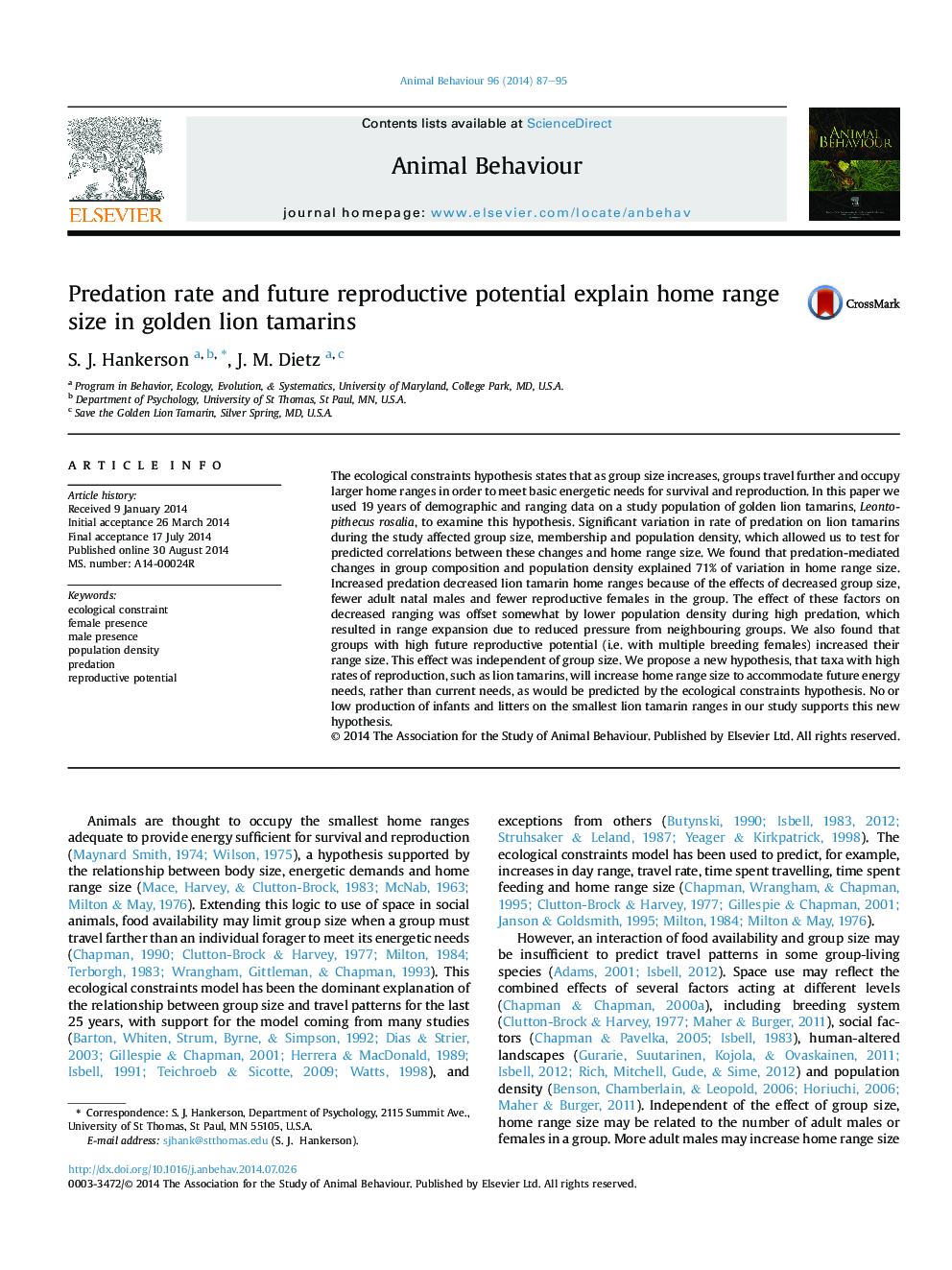| کد مقاله | کد نشریه | سال انتشار | مقاله انگلیسی | نسخه تمام متن |
|---|---|---|---|---|
| 2416356 | 1552232 | 2014 | 9 صفحه PDF | دانلود رایگان |
• We examine effects of ecological constraints, group composition and predation on tamarin home ranges.
• Predation-mediated changes explained 71% of the variation in home range size.
• There was a positive relation between group size and home range size only for large groups.
• Groups with multiple adult males and breeding females had larger home ranges.
• Tamarins with high reproductive rates increased home range size to ensure future energy needs.
The ecological constraints hypothesis states that as group size increases, groups travel further and occupy larger home ranges in order to meet basic energetic needs for survival and reproduction. In this paper we used 19 years of demographic and ranging data on a study population of golden lion tamarins, Leontopithecus rosalia, to examine this hypothesis. Significant variation in rate of predation on lion tamarins during the study affected group size, membership and population density, which allowed us to test for predicted correlations between these changes and home range size. We found that predation-mediated changes in group composition and population density explained 71% of variation in home range size. Increased predation decreased lion tamarin home ranges because of the effects of decreased group size, fewer adult natal males and fewer reproductive females in the group. The effect of these factors on decreased ranging was offset somewhat by lower population density during high predation, which resulted in range expansion due to reduced pressure from neighbouring groups. We also found that groups with high future reproductive potential (i.e. with multiple breeding females) increased their range size. This effect was independent of group size. We propose a new hypothesis, that taxa with high rates of reproduction, such as lion tamarins, will increase home range size to accommodate future energy needs, rather than current needs, as would be predicted by the ecological constraints hypothesis. No or low production of infants and litters on the smallest lion tamarin ranges in our study supports this new hypothesis.
Journal: Animal Behaviour - Volume 96, October 2014, Pages 87–95
